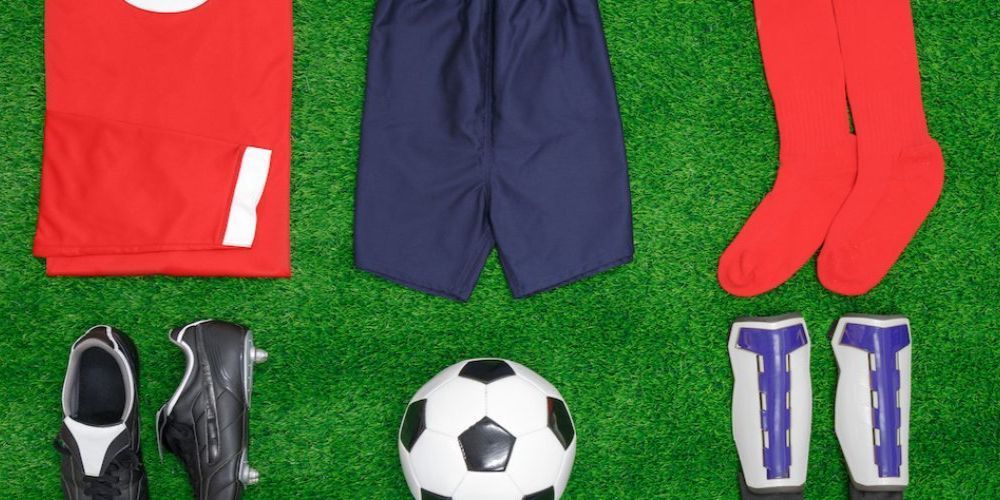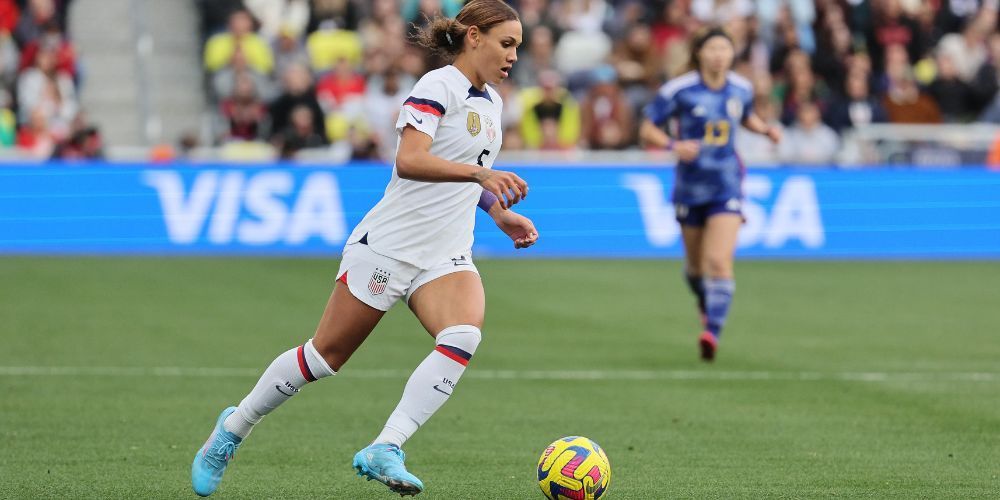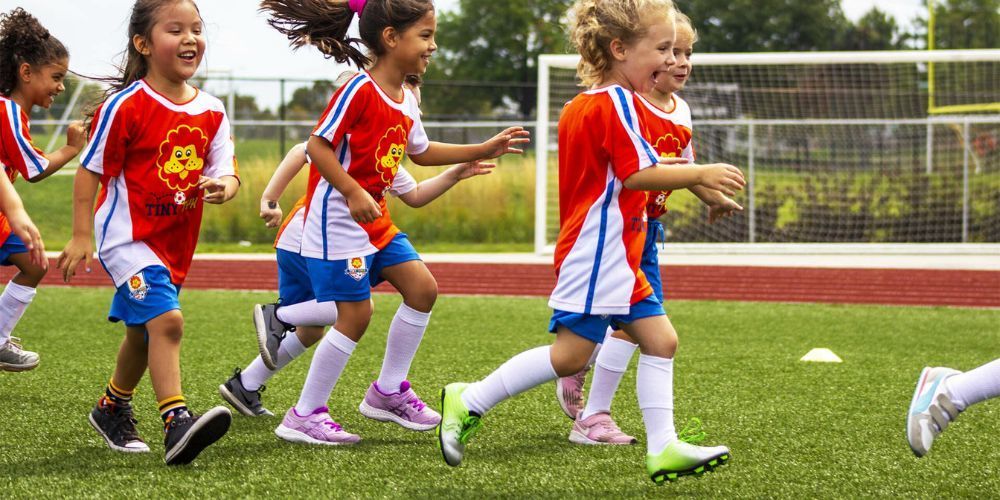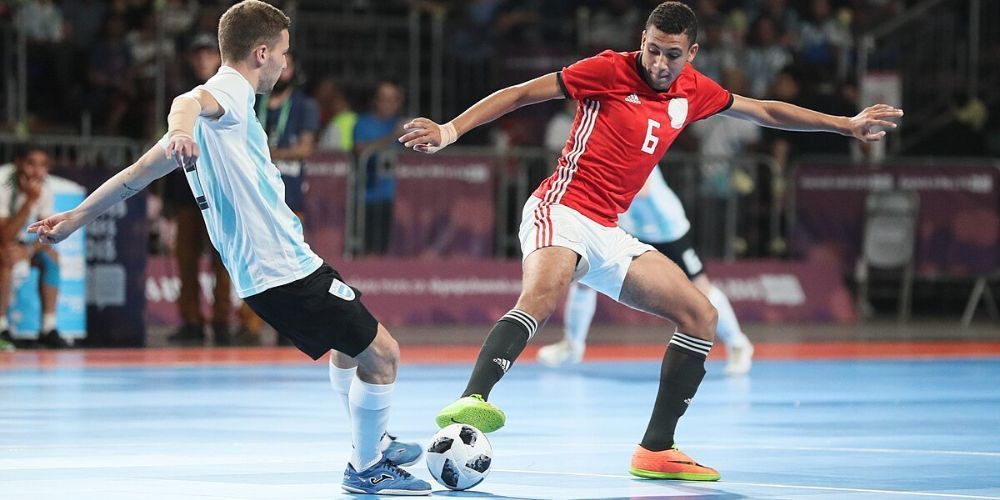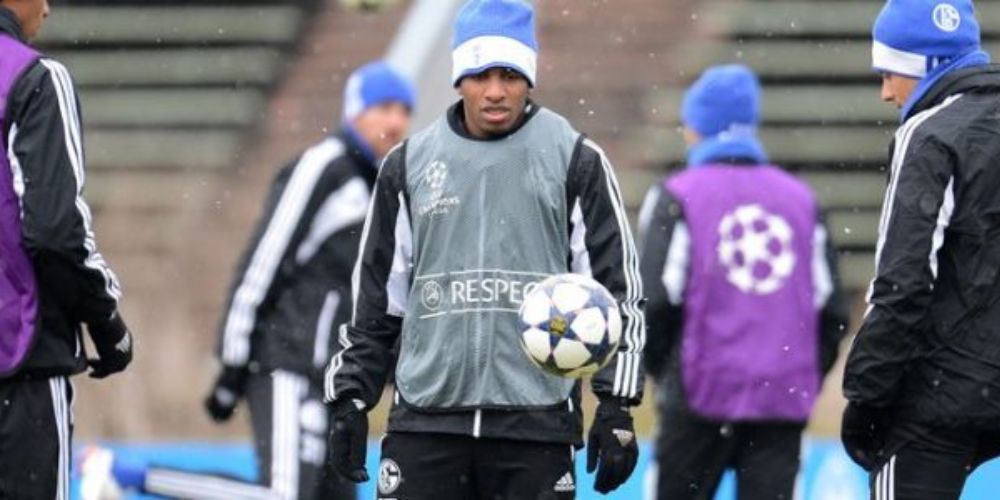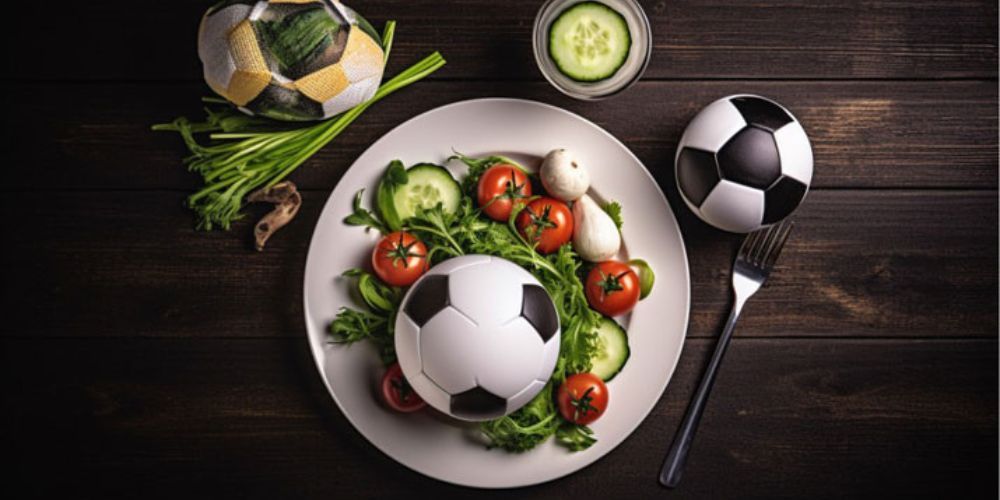Top-Rated Men's Soccer Cleats 2024: The Ultimate Buying Guide
Finding the perfect pair of men's soccer cleats can seem like navigating a minefield of slick marketing claims and flashy designs that don’t always deliver. You’re investing not just money but also your comfort and safety on the field—an underperforming pair could lead to discomfort or even injuries. That's why we've poured hours into gathering expert reviews, analyzing player feedback, and comparing specs extensively so you don't have to.
From examining traction patterns suited for different surfaces to testing materials for durability and breathability, our guide is designed to pinpoint what truly matters in a soccer cleat. Whether you're sprinting on grass or making sharp turns on turf, you'll find detailed recommendations tailored to your playing style. Now, let’s dive right into the key factors that will help you make an informed choice this season.
The top-rated men's soccer cleats for 2024 include the Nike Mercurial Superfly 10 Elite FG High-Top Soccer Cleats , Nike Mercurial Vapor 15 Elite FG Low-Top Soccer Cleats , and Nike Phantom Luna 2 Elite Electric FG High-Top Soccer Cleats. These options offer cutting-edge technology, comfort, and style for soccer players.
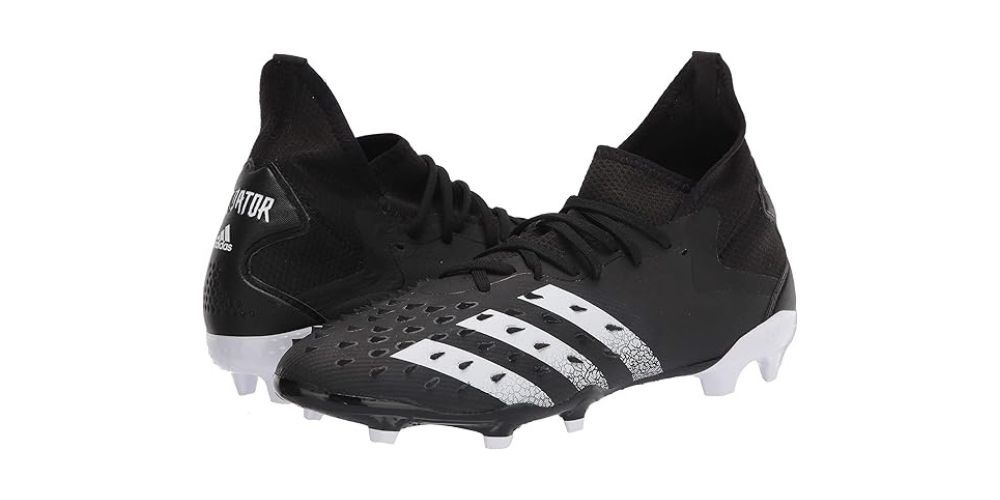
So, you're on the hunt for the perfect soccer cleats. It's not just about picking what looks good; it's also about what feels right and helps you play your best game. Let's dive into the crucial factors to consider when choosing your next pair of soccer cleats.
Traction
Traction is crucial because it's what keeps you steady on the field, helping you make sharp cuts, quick stops, and explosive sprints without slipping. The type of traction you need depends on the surface you play on:
- Firm Ground (FG) : Ideal for natural grass fields with firm surfaces. Look for cleats with conical or bladed studs for stability and grip.
- Artificial Grass (AG) : Designed for modern synthetic grass fields, featuring shorter studs to support lateral movements and reduce stud pressure.
- Turf : Intended for abrasive artificial surfaces with rubber studs providing excellent grip without causing damage to the turf.
- Multi Ground (MG) : Suitable for a variety of surfaces, including both natural and artificial grass.
- Indoor/Court : Designed for hard indoor court surfaces, typically featuring a flat, non-marking outsole for optimal traction without leaving marks.
Materials
The materials used in soccer cleats affect their comfort, durability, and performance:
- Synthetic : Lightweight and water-resistant, ideal for wet conditions with easy care and maintenance.
- Leather : Offers exceptional comfort and molds to your foot for a personalized fit over time, but may require more maintenance.
- Knit : Provides a snug, sock-like fit with enhanced breathability and flexibility.
Support
Injuries are common in sports, especially ankle injuries in soccer due to constant running and changing direction:
- High-Tops : Offer additional ankle support, suitable if you're susceptible to ankle injuries or need extra stability.
- Low-Tops : Known for their lightweight and flexible design, providing greater freedom of movement.
Weight
The weight of your cleats can impact your agility and speed on the field. Lighter cleats allow for quicker movements and reduced fatigue during long matches, whereas heavier cleats might offer more durability and sturdiness.
Price
The price range varies widely based on brand and model. It's essential to set a budget while considering the performance features offered by different cleats. Expensive doesn't always mean better; find the balance between cost and functionality that meets your needs perfectly.
By understanding these key elements, you can make an informed decision when selecting your next pair of soccer cleats that suits your playing style and preferences perfectly.
As we embark on a quest to uncover the top-performing men's soccer cleats for 2024, let's analyze the finest offerings available in today’s market.
Top Cleats on the Market
Finding the perfect pair of soccer cleats can significantly impact your game. With numerous options available, it's important to know which ones are worth considering. Let's take a closer look at some of the top men's soccer cleats for 2024 and what makes each one a standout choice.
Nike Mercurial Superfly 10 Elite FG
Nike's Mercurial Superfly 10 Elite FG showcases cutting-edge technology with a price tag of around $285. This cleat is renowned for its ultralight design and dynamic fit collar, providing players with a secure, sock-like fit around the ankle, ensuring maximum comfort and support during play. The lightweight construction gives players a nimble feel while maintaining exceptional durability, making it an ideal choice for speedy and agile players who thrive on quick movements on the field.
The innovative design and snug fit around the ankle provide players with added stability, reducing the risk of injury during sharp turns and sudden changes in direction. This emphasis on player safety sets the Mercurial Superfly 10 Elite FG apart, ensuring that players can focus on their performance without compromising their well-being.
Adidas Predator Freak.2
Priced at approximately $275, the Adidas Predator Freak.2 is a game-changer for players who prioritize ball control and precision. Its control-enhancing textured upper allows for superior grip and manipulation of the ball, empowering players to execute precise passes, shots, and touches. Moreover, the Predator Freak.2 delivers exceptional comfort and a responsive feel, providing players with confidence in their maneuvers on the field. This combination of control and comfort positions this cleat as an excellent choice for midfielders and forwards seeking to elevate their performance levels.
Puma Future Z 1.4
Puma's Future Z 1.4 , priced at around $200, has carved a niche in the market with its adaptive midfoot band technology that enhances agility and support. The unique feature allows players to move with enhanced freedom and responsiveness on the field—qualities highly sought after by playmakers focused on precision passing and creating goal-scoring opportunities. Additionally, the adaptive midfoot band ensures a personalized fit tailored to individual foot shapes, making it an attractive option for players seeking innovative technologies that directly impact their performance.
New Balance Furon v6+
Priced at about $225, the New Balance Furon v7 stands out with its lightweight synthetic upper designed specifically for speed. Targeted towards wingers and strikers who rely on rapid bursts of acceleration and swift directional changes, this cleat prioritizes agility and explosive movements. Similar to a race car engineered for agility and speed, the Furon v 7 provides athletes with an aerodynamic edge in their movements on the pitch, amplifying speed capabilities during high-stakes moments in matches.
In summary, these top-rated soccer cleats offer an array of cutting-edge features designed to enhance player performance across various playing styles and positions. By understanding how each cleat aligns with individual preferences and playing needs, you can make an informed decision while investing in gear that complements your unique strengths as a player.
Moving forward from assessing some of the top-rated soccer cleats available, let's now shift our attention to factors that intertwine comfort and performance in these essential pieces of sports equipment.
Comfort and Performance Factors
When it comes to soccer cleats , comfort plays a pivotal role, akin to having a favorite snack before a big game—it makes all the difference. Finding the perfect balance between comfort and performance can provide a significant edge on the field.
Fit is crucial for comfort—similar to locating the right-sized puzzle piece, the fit of your soccer cleats needs to be just right. A snug yet comfortable fit ensures stability and reduces the risk of blisters. You wouldn't want shoes that pinch or slide around when you're trying to focus on your game.
Ensure a good fit first and foremost—too tight or too loose can lead to discomfort and blisters.
Moving on, let's dive into the specifics of cushioned insoles and breathable uppers. The right insole acts like a protective layer between your foot and the ground, lessening impact and providing support as you sprint down the field. Similarly, breathable uppers keep your feet cool and dry, preventing discomfort from excess moisture and enhancing comfort throughout your game.
Comfort and performance come together seamlessly with lightweight materials that offer robust support and grip without hindering speed and agility—a perfect fusion for peak performance on the pitch.
Many advanced soccer cleats now use synthetic materials that mimic the advantages of leather while being lighter and easier to maintain. These materials allow for excellent flexibility without sacrificing support.
Every move, kick, and sprint becomes more manageable when wearing soccer cleats designed for top-tier performance. They provide a balance of stability, agility, and responsiveness—all crucial elements for dominating on the field.
So, when considering your next cleats, remember: comfort sets the stage for your best games by keeping you focused on what matters most—your performance. Whether it's making a breakaway run or nailing a precision pass, your cleats should be there every step of the way to back you up both physically and mentally.
It's evident that comfort and performance go hand in hand when selecting soccer cleats. Finding that sweet spot where comfort elevates performance can take your game to new heights.
Transitioning from the fundamental aspects of comfort and performance in soccer cleats , let's now explore the diverse styles available catered to different playing levels.
Styles and Playing Levels: Finding the Perfect Match
Choosing the right soccer cleats goes beyond just considering your level of experience. It extends to your style preference as well. Whether you're a beginner or a professional, having the right style can enhance your performance and even boost your confidence on the field.
For Beginner Players
When you're just starting out, it's crucial to find cleats that strike a balance between comfort, durability, and cost. Look for mid-priced options known for providing good support without putting a strain on your budget. It's essential for beginners to avoid the extremes: excessively cheap cleats may lack the necessary support and quality, while high-end options could be unnecessary overkill for those still developing their skills.
If you were preparing a meal for the first time, you wouldn't want to start with the most complicated recipe. Similarly, novice players benefit from cleats that offer solid fundamentals without overwhelming them with advanced features they might not yet appreciate or require.
Advancing to Intermediate Level
As your skills advance, so should the features of your cleats. Intermediate players need to focus on enhancements such as improved fit, better traction patterns, and higher-quality materials. These aspects play a significant role in supporting your development as a player and enabling you to up your game.
Intermediate-level players are like students moving from basic algebra to geometry. They require a more complex set of tools to succeed; similarly, intermediate cleats should boast more intricate features that align with the growing demands of their game.
High Standards for Professional Players
For professional players, every aspect of their gear is meticulously chosen for optimizing performance. High-end cleats packed with the latest technology in weight reduction, grip enhancement, and foot support are non-negotiable. The finesse of their play demands no less than top-of-the-line footwear to complement their skill level.
Imagine a surgeon using anything but the best surgical instruments or an artist employing subpar brushes—professional players must equip themselves with superior cleats that lend them the edge needed at their elite level of play.
Style Preferences: A Personal Touch
Aside from skill level, style preference also comes into play when selecting soccer cleats. Some players prefer high-top designs for extra ankle support whereas others favor low-top models for greater agility. Additionally, color and visual appeal can be influential factors; while some athletes gravitate towards flashy designs that catch the eye, others opt for understated tones or classic black leather for a timeless look.
Much like choosing an outfit before an important event, your style preference reflects your personality and affects your confidence on and off the pitch. Selecting sleek or bold design elements can convey a sense of individuality and contribute to your overall enjoyment of the sport.
As crucial as it is to match your playing level and personal style when choosing soccer cleats, ensuring the right fit is equally paramount. Let's now dive into the art of finding the perfect fit for your soccer cleats.
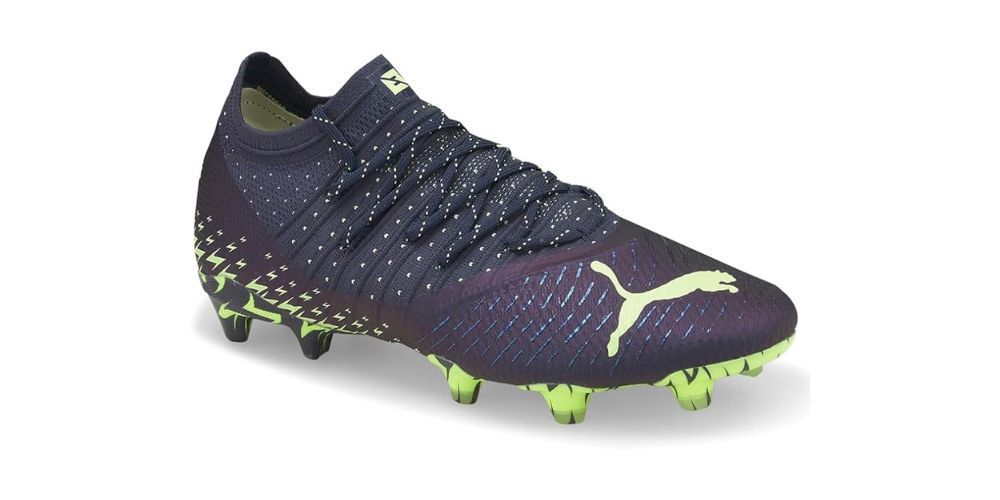
Choosing the Right Fit
When it comes to selecting the right pair of soccer cleats , finding the perfect fit is critical for comfort, performance, and injury prevention. This decision can significantly impact your game, so it's essential to approach it with care and attention. The right pair of cleats should feel like an extension of your feet, providing the necessary support and agility to maximize your gameplay.
Measuring your feet is the crucial first step. It's important to measure both the length and width of your feet. Many players overlook this step and end up with ill-fitting cleats that cause discomfort and hinder their performance on the field. Also, consider that our feet tend to swell throughout the day, especially after physical activity, so checking your foot measurements when they are at their largest ensures you get the most accurate sizing.
Next, trying on cleats is an equally crucial step in the process. Always try them on with the same type of socks you plan to wear during games. This gives you an accurate feel for how they will fit during actual gameplay. Pay close attention to any pinching or excessive space in the toe box; the ideal fit should be snug but not too tight. Your toes should have a little wiggle room without sliding forward and touching the cleat's interior.
Another factor to consider is the break-in period. Some cleats may need time to mold to your feet and ensure a comfortable fit. It's advisable to wear them around the house or during light training sessions before diving into full-fledged gameplay. This allows the materials to gradually conform to your feet without causing discomfort or blisters during your matches.
Each step in determining the perfect fit for your soccer cleats significantly contributes to both your comfort and performance on the field. But before we wrap up, there are still some additional considerations worth exploring that could make all the difference in finding your ideal pair of cleats.
Now that you've laid down the groundwork for understanding how to choose the right soccer cleats , let's shift our focus to another critical aspect: Synthetic vs. Leather Cleats.
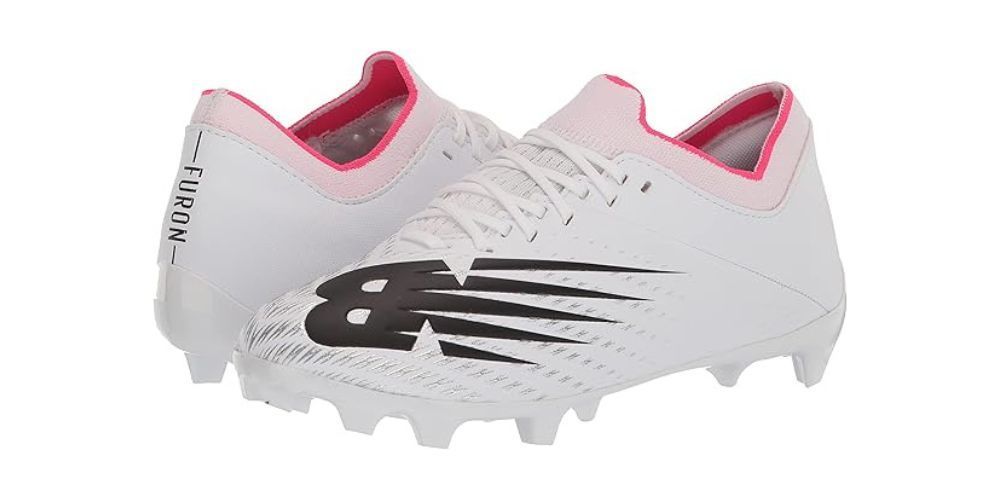
Synthetic vs. Leather Cleats
When it comes to choosing between synthetic and leather soccer cleats, the decision often boils down to factors such as weight, comfort, maintenance, and weather resistance.
Synthetic materials have gained popularity due to being lighter and more weather-resistant than leather. This makes them a preferred choice for players who need agility and speed on the field. Additionally, they are generally easier to clean and maintain, which can be a time-saving boon for busy athletes. However, there might be trade-offs in terms of long-term comfort and fit compared to leather. On the field, speedy wingers or attackers often opt for synthetic cleats because they value the lightweight construction that allows for quick movements. Players who often transition across different playing surfaces might also find the weather-resistant properties of synthetic cleats beneficial, providing consistent performance on various pitches throughout a season.
Let's think of a synthetic upper as a high-performance sports car—lightweight, agile, and built for speed. These characteristics are particularly advantageous when maneuvering swiftly and making explosive plays during a match. At the same time, it's important to consider that while synthetic cleats offer impressive practical benefits, they may not provide the same customized fit that some players seek.
Leather cleats, particularly those made from kangaroo leather, have long been cherished for their remarkable fit and comfort. The natural material is known to mold to the shape of the foot over time, creating a personalized fit that many players find unmatched in terms of support.
While it's true that leather cleats are generally heavier than their synthetic counterparts and require more maintenance like regular cleaning and conditioning to prevent deterioration, many players swear by their superior comfort and foot-feel—a key consideration for those who spend extensive amounts of time on the pitch. Players who rely on precise ball control or seek maximum comfort during longer matches may gravitate toward leather cleats due to their ability to provide a cozy fit over time. Midfielders or playmakers benefit from the ball-handling precision offered by comfortable leather boots, enhancing their ability to dictate the flow of the game with confidence.
In summary, while each type has its advantages and drawbacks, the choice between synthetic and leather cleats ultimately depends on your individual playing style, position-specific needs, and personal preferences regarding comfort and performance.
Understanding the nuances between synthetic and leather cleats offers valuable insights into selecting the ideal footwear for your gameplay. Now, let's shift our focus to exploring the differences between firm ground and soft ground options.
Firm Ground vs. Soft Ground Options
In soccer, the playing surface can significantly impact your performance, especially when it comes to selecting cleats. Firm Ground (FG) cleats are specifically designed for natural grass fields in dry conditions. They feature multiple shorter studs that offer a balance of traction and stability, allowing players to make quick cuts, turns, and sprints without slipping.
Imagine a professional dart player needing a steady hand to aim accurately - it's the same concept for soccer players needing reliable traction for precise ball control and rapid movement on natural grass. The shorter studs of FG cleats penetrate the ground just enough to provide stability during quick, agile movements without getting stuck or causing discomfort. These cleats prioritize performance and also contribute to injury prevention by evenly distributing the player's weight across multiple studs, reducing the risk of ankle injuries and slips.
Soft Ground (SG) Cleats
On the other hand, Soft Ground (SG) cleats are tailored for wet or muddy playing conditions. Unlike FG cleats, SG cleats typically feature fewer but longer detachable studs designed to penetrate softer ground for enhanced traction in slippery conditions. This design allows players to maintain their footing even on slick, waterlogged pitches, preventing sliding and ensuring they remain stable throughout the game.
Players often opt for SG cleats when facing adverse weather conditions or playing on poorly maintained natural grass fields because they need that extra grip and stability in such scenarios.
Understanding the distinct advantages of each type of cleat is essential for making an informed decision based on the specific playing conditions and individual preferences.
In conclusion, choosing between Firm Ground (FG) and Soft Ground (SG) cleats depends on the playing surface and weather conditions. By understanding the unique benefits of each type of cleat, players can make informed decisions tailored to maximize their performance on the field.
Nature's Playbook
As an Amazon Associate I earn from qualifying purchases.

